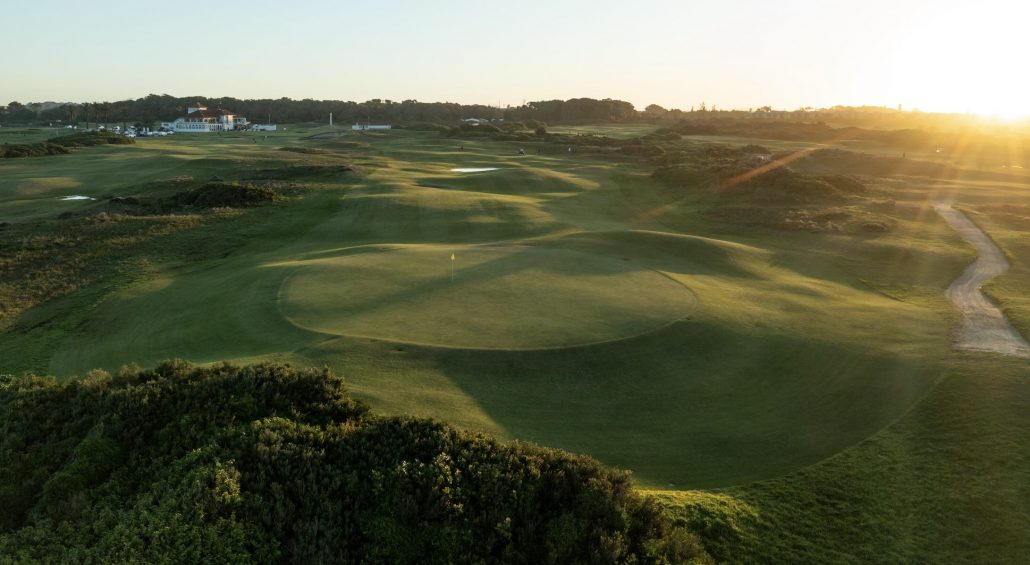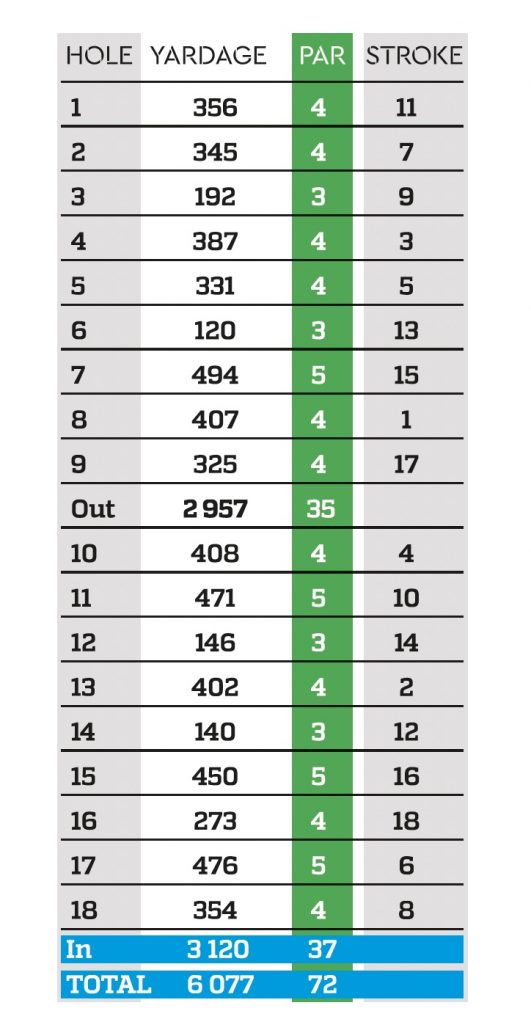Driving down Marine Drive in Gqeberha, you arrive at a venue that’s more an institution than a golf course, writes MARK SAMPSON.
After opening in October 1931, Humewood Golf Club hosted the first of many SA Amateur and SA Opens in 1934.
Many of the greats who have played it acknowledge its iconic layout and testing terrain moulded from the coastal Eastern Cape terrain. Colonel SV Hotchkin (1876-1953) was approached in 1929 to design a new course to accommodate the insatiable appetite for golf at the turn of the century in the area.
A mere two years later and with army-like precision, a stunning links layout arose from low-lying coastal scrub over meandering windy terrain beside Algoa Bay. Little did they know at the time it would become one of South Africa’s most famous courses and one of the few genuine links courses in the country. They could not have been in better hands as the Colonel – who started as an army sign-up and ultimately achieved Major while serving in Palestine and Mesopotamia during World War I – knew what he was doing.
It was on his first trip to South Africa to avoid the European winter in 1927-28 that he was commissioned. Thereafter he was involved with many of South Africa’s courses including East London, Durban Country Club, Royal Port Alfred and King David, Mowbray. Incredible pedigree, indeed.
As is the norm with most links courses in Europe, they straddle the coast where you can expect wind of varying strength and ever-changing conditions. Hotchkin took the prevailing easterly or westerly into account during his design with many of the holes with, or against, the wind. The great Bobby Locke, who won five British Open tournaments, was quoted as saying Humewood was the finest golf course in South Africa. Although this was back in the ’40s with many courses mushrooming up since, Humewood consistently manages to maintain her ranking in South Africa’s top 10.
By definition, a links golf course is meant to have bunkers that are deep enough to stop the breeze from blowing the sand out of them. But ‘breeze’ is a term that is not used very often in Gqeberha, also affectionately known as the ‘The Windy City’. The term links, originating in Scotland, in its purest sense refers to a strip of arable land between the ocean and the land. It’s not quite in Scotland, but with an area originally having agricultural land bordering it, it can certainly be classified as one of South Africa’s true links courses.
The only links ‘criteria’ where the course falls short is in that the nines loop back on themselves as opposed to having a proper outward and inward nine, in true links fashion. The layout of the course is slightly different to the norm, as the front nine has only one par five, hence the par 35, while the back nine has three, making it a par 37.
The front nine, having stroke 1, 3, 5, 7 and 9, is undoubtably the toughest of the two loops even though it falls on the flatter part of the course with the back nine occurring on more undulating terrain.
The 1st hole is a nice welcoming par four of no more than 356m with no real danger for the average golfer as the two fairway bunkers are a decent bash to reach. In recent times, with the heavy rains in the Eastern Cape, the 1st had a water hazard which was officially part of the course for as long as it contained water.
Depending on the wind direction, the par-three 3rd, at 192m, is when you feel the first bite of Humewood. Into the wind, a driver will suffice for many. The safe shot is to miss left, as bunkers guard the right side with swales on the right. A par, if offered, should be taken every time.
The Colonel certainly had a grin on his face when designing the 4th. At 387m, it includes both fairway and greenside bunkers, making it a tough ask for even the most experienced golfer when into the wind. It also has a massive green bringing in the possibility of a three-putt.
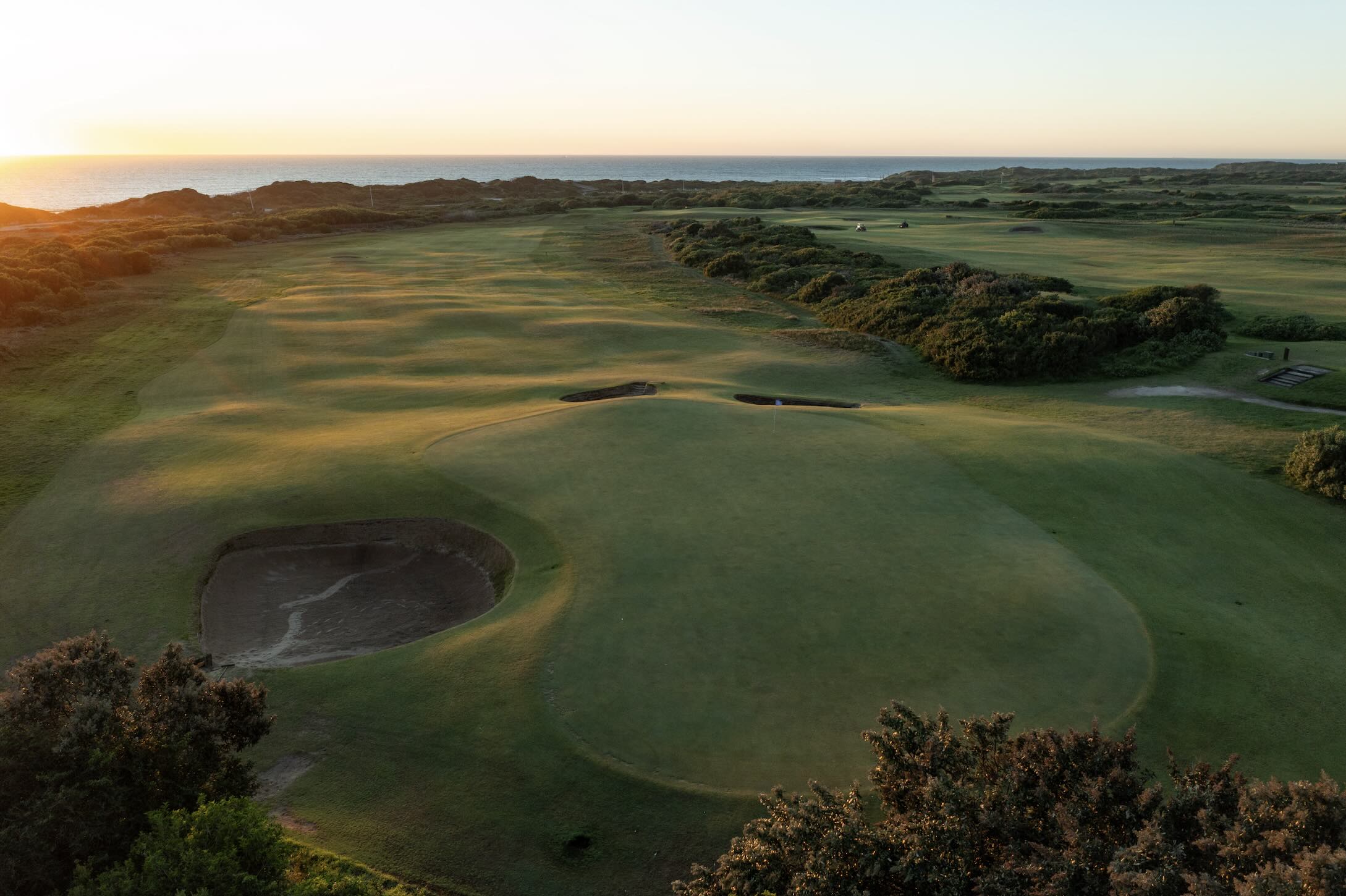
The difficulty of the stroke-one 8th is its length, some 407m, which is compounded by a bushy graveyard left and a smattering of isolated bushes right. It requires both accuracy and a large dose of nerves. Length being its main defender, it is reinforced greenside as no bunkers are present. The surface is rather small and for a par four, a very accurate approach is required to find the surface.
The short 9th is a reprieve and a genuine birdie opportunity. If the wind is up, the 325m hole is very accessible.
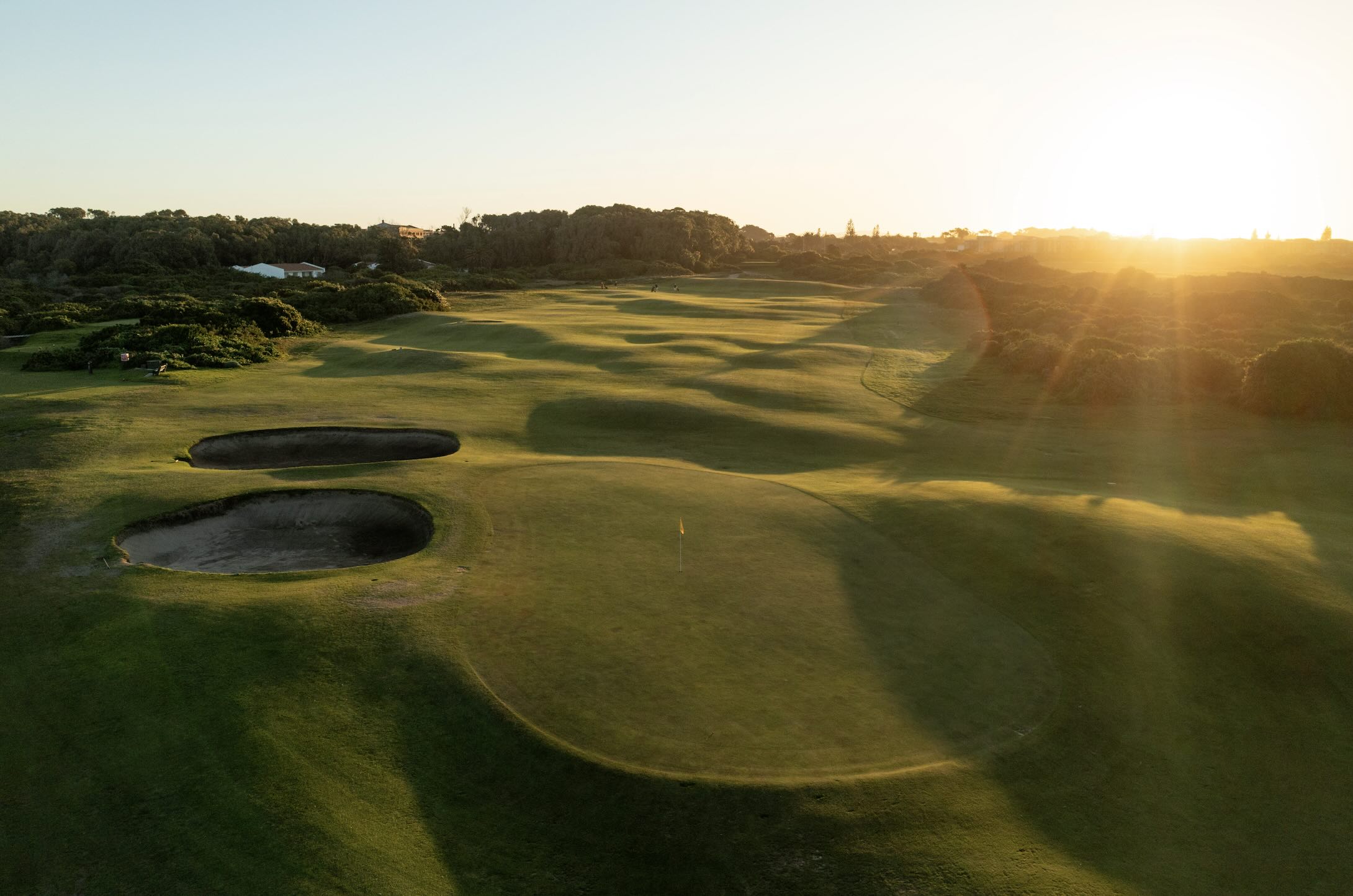
The long 10th (previously a par five) is a true links-like hole; the rolling fairway, which is slightly obscured from the tee, is an uneven tapestry of swales and hollows, assuring you of an uneven stance. A long second into predominantly crosswinds to an undulating green completes a difficult hole with the stroke-four rating for good reason.
The view that greets you after a short walk to the elevated 11th tee gives you a true sense of the land and beauty of this course with the ocean as a backdrop. It’s a par five which must have one of the smallest fairway bunkers in the country. That said, it is a guaranteed one-stroke penalty if you are unlucky enough to find it.
The 13th, accordingly to Gary Player, is one of the toughest par fours he has ever played. This 402m uphill monster requires total accuracy, and then the rolling fairway may still dish up a stance requiring the utmost skill for a solid approach. The tiny, raised green, only 27m deep, is a very difficult find. It is a hole not for the faint-hearted. With no respite in mind, the Colonel then created a true gem of a short hole. It’s an elevated par three, with a green that has a ridge through it, a pot bunker left and a drop-off over the back and finally a blind bunker right. With the tee hidden between bushes, the wind can be difficult to read.
A standout hole on the back nine is the short par-four 16th. At only 273m the green is very much in range in the right wind direction. It requires a fade for the right- handers to navigate through greenside bunkers left and right. At 24m deep, this is the smallest green and is also relatively flat, hence its stroke of 18.
The 17th’s difficulty lies in its length, strong crosswinds and a green that falls away at the sides. A blind second over a large mound as well as a water hazard running across the front of the green makes for hole that needs solid strikes to find the surface.
The 18th is a great finishing hole; with the clubhouse beckoning you in for a frosty, you know you are a mere 354m away. The fairway bends slightly to the right and is inundated with more swales. On completion of your round take a moment to acknowledge these truly memorable 18 holes which have played host to multiple tournaments and every great South African player.
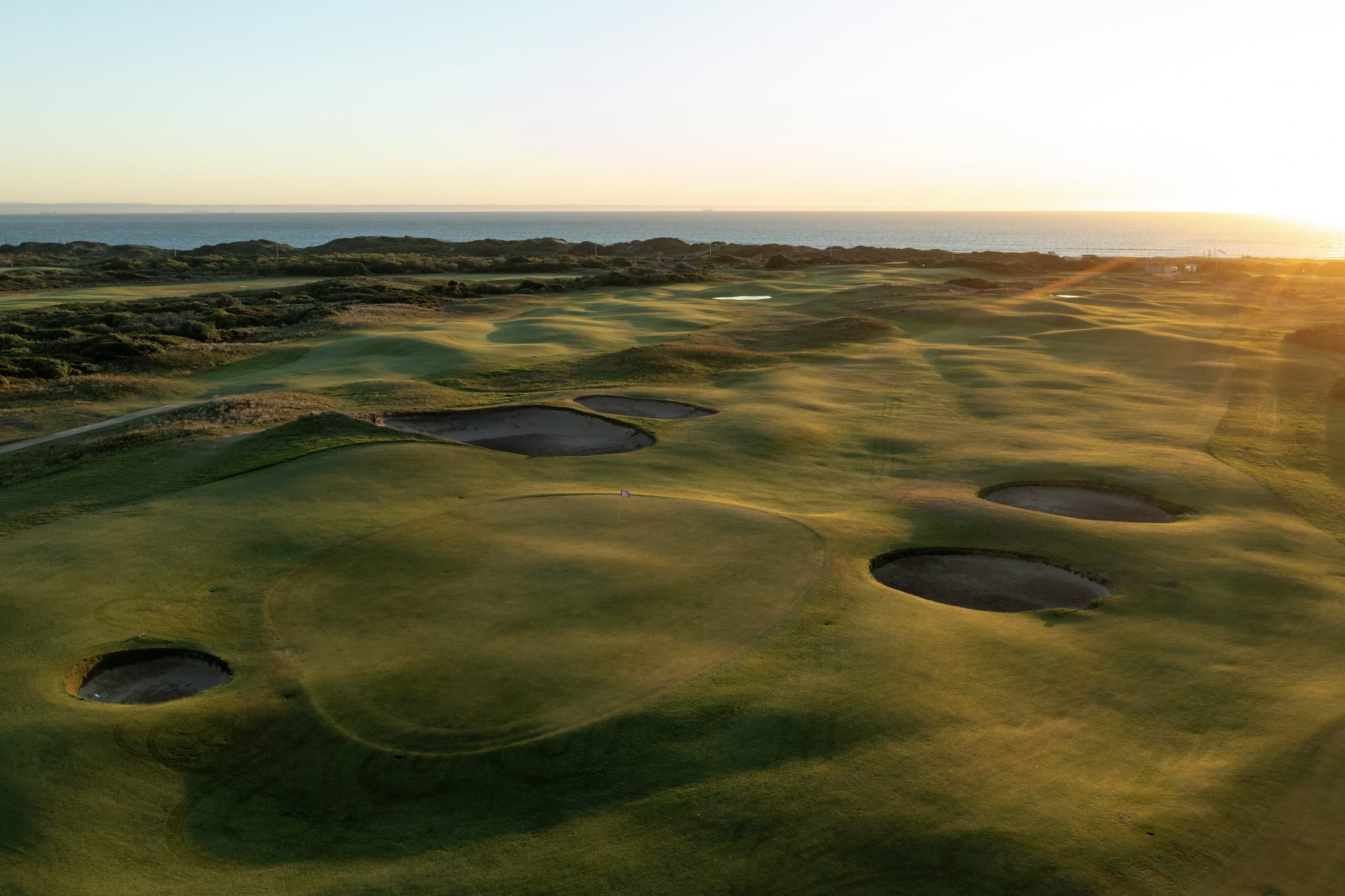
The clubhouse is steeped in history with trophies and pictures of all the previous winners. A recent addition to the walls is the original drawings of the design layout by Colonel Hotchkin.
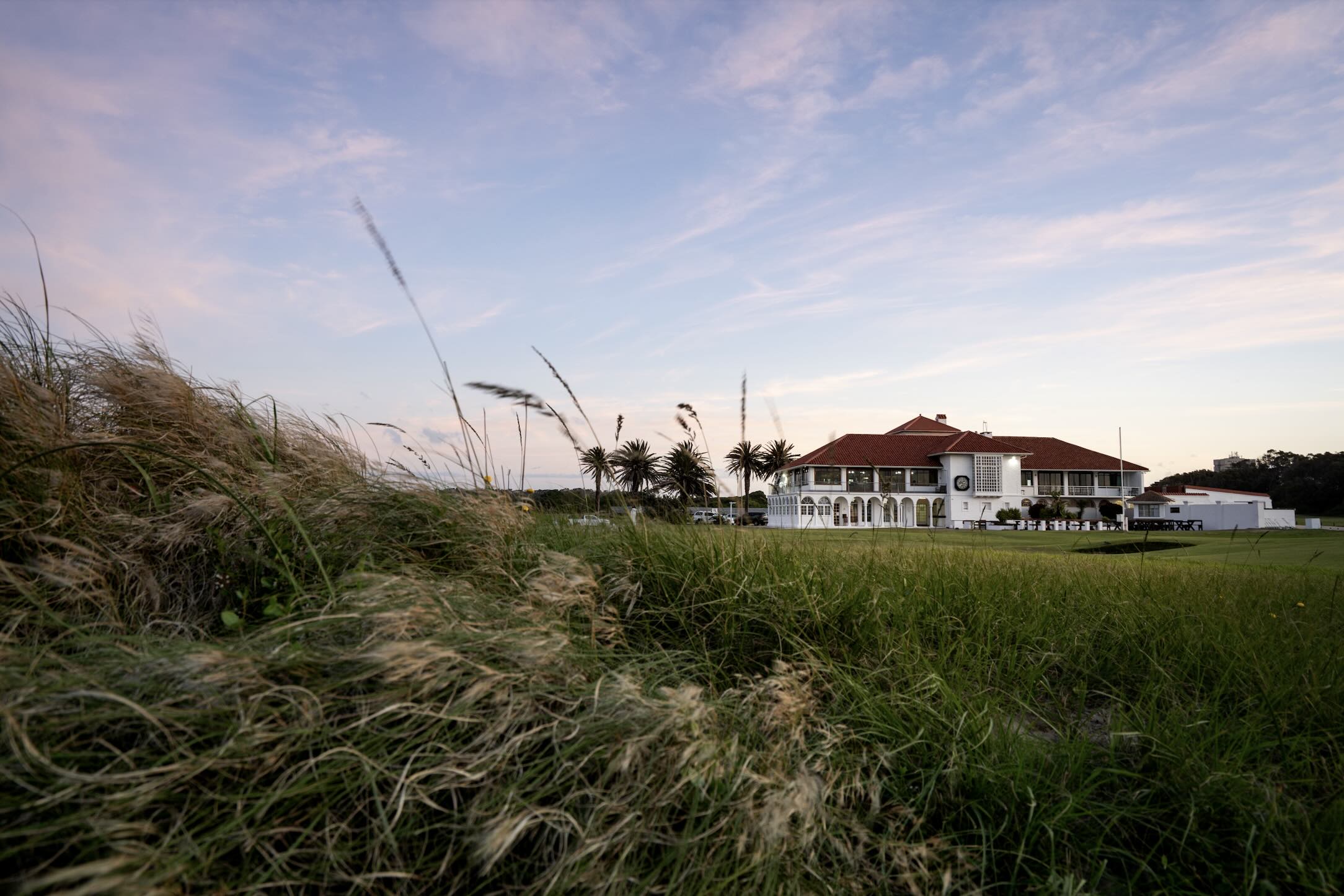
During current renovations, the drawing were found stored in a box, truly historical memorabilia befitting of this great layout. The much-needed renovations to be completed soon include a full makeover of the changerooms. The upstairs bar area is a must visit. It means a journey up the stairwell adorned with history most clubs dream of. From the balcony you can see the true beauty of the course and the lay of the land. Sid Brews, Bobby Locke, Gary Player, John Bland, Tony Johnstone, Ernie Els and Retief Goosen are just a few who have walked the fairways.
This is a course that has to be on your bucket list – steeped in history and mercurial by nature, she is truly one of our best.
SIGNATURE HOLE
6th hole, par three, 120m
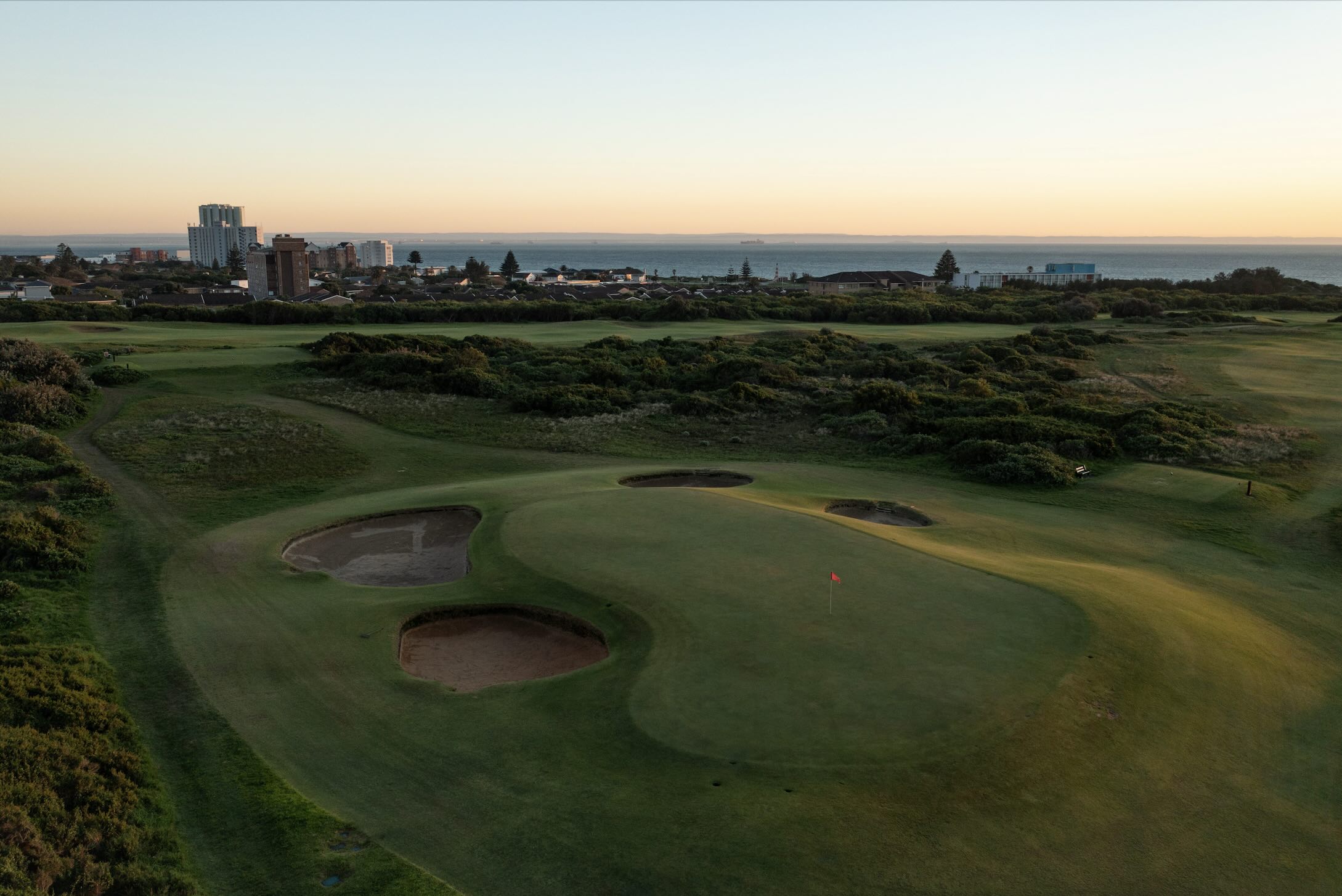
Nasty in its simplicity, the par-three 6th is a real tease. Unnervingly straight-forward but devilishly difficult at 120m, you would be forgiven for not giving it your full attention. But beware the well-protected and elevated turtleshell-like green. According to longstanding general manager Brendon Timm, it is the shortest par five in the world.
From tee box to green there seems to be very little in this hole. A simple wedge or punched 9-iron can quickly change to much more when the wind comes up. With trees off to the right of the green, wind direction and severity make for a difficult read. The hole also has an unnerving similarity to the ‘Prince of Wales’ 12th hole at Durban Country Club, with severe drop-offs and deep bunkers. The raised green gets wider from front to back; however two bunkers front left and right await a mis-hit shot. In true links style, the bunkers are deep and almost seem to be cut out of the green.
Therefore, taking the bunkers out of play is advisable as well as keeping in mind the wind direction. If you leave yourself a chip with the wind behind, off the standard Humewood tight lie, you will have your work cut out in trying to up and down.
In short, there is no bailout area on this hole. As is standard in windy conditions, club down – maybe even two clubs – and swing easy ensuring solid contact and try to keep the ball low. Putting it back in your stance will also aid in this.
Regardless of pin position, finding the green’s surface is goal No 1 on this hole. The good news is that the surface is 36m deep making it one of the longer greens on the course. The bad news: it is very narrow, further highlighting any crosswinds that need navigating.
For good reason this hole is well documented as one of the most difficult par threes on African soil. Once on the green be sure to look back at how close the tee is and how clever the design of the hole is. It’s not always about length, something the Colonel was well versed in.
Humewood must have one of the most distinguished quartets of par threes of any course in the world.
GREENFEES
Members: R180/9 holes R295/18 holes
Guests: Member guest R300/9 R495/18
Hotel guest: R450/9 R780/18
Golf cart: R240/9 R430/18
GETTING THERE
The main road, Beach Road, which runs along the coastline from the CBD becomes Marine Drive. The course will appear on your right and is well marked.
ADDRESS
Marine Drive, Summerstrand
Gqeberha
6001
ROAD DISTANCES
Bloemfontein: 660km
Cape Town: 765km
Durban: 916km
Johannesburg: 1,054km
CONTACT DETAILS
Email: [email protected]
Website: www.humewoodgolf.co.za
Phone: 041 583 3011
– This article first appeared in the December 2023 issue of Compleat Golfer magazine.
Photos: Mark Sampson


